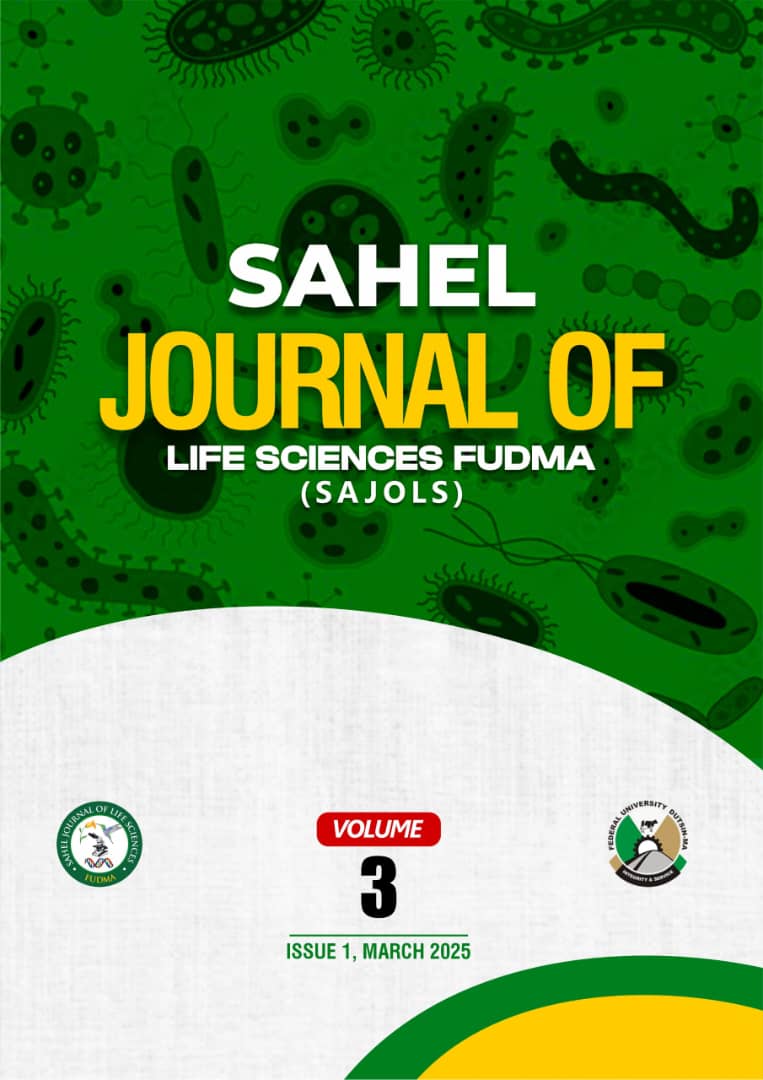Assessment of Heavy Metals and Mycological Flora in Various Dried Fish Samples from Idi-Ape Markets in Ilorin, Nigeria
DOI:
https://doi.org/10.33003/sajols-2025-0301-66Abstract
Fish is a highly nutritious food and a significant protein source widely consumed across Nigeria and globally. This study assessed the levels of heavy metals, aflatoxins, mycological flora, and proximate composition in three dried fish species Clarias gariepinus, Gymnarchus niloticus, and Tilapia zilli obtained from Idi-Ape Market, Ibadan. Heavy metals were analyzed using Atomic Absorption Spectroscopy (AAS), while aflatoxins were quantified via HighPerformance Liquid Chromatography (HPLC).Lead (Pb) concentrations ranged from 0.152 mg/kg in T. zilli to 0.214 mg/kg in C. gariepinus, exceeding the WHO permissible limit of 0.05 mg/kg in all samples. Cadmium (Cd) levels varied between 0.013 mg/kg and 0.028 mg/kg, also surpassing the FAO/WHO safe limit of 0.005 mg/kg. Aflatoxin B₁ levels ranged from 3.52 µg/kg to 7.84 µg/kg, exceeding the European Union threshold of 2 µg/kg in two of the samples. Fungal counts ranged from 1.0 ± 0.00a × 10² CFU/g in T. zilli to 8.5 ± 0.71c × 10² CFU/g in G. niloticus, with isolates including Aspergillus flavus, A. niger, and Penicillium spp., known producers of mycotoxins. Moisture content ranged from 4.136 ± 0.04(a)% to 5.778 ± 0.03(ab)%, ash content from 3.192 ± 0.05(a)% to 4.189 ± 0.12(b)%, and crude fibre from 24.254 ± 0.08(bc)% to 31.068 ± 0.20(a)%. Protein content was highest in G. niloticus (41.199 ± 0.00(c) %), while T. zilli had the highest carbohydrate content (18.138 ± 0.10(c) % and calorific value (1382.84 ± 2.78 (b) (KJ/100g). The detection of heavy metals and aflatoxins at levels exceeding safety limits, along with the presence of toxigenic fungi, indicates potential public health risks associated with the consumption of these dried fish samples.


